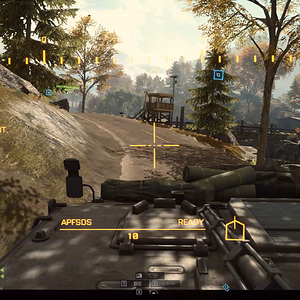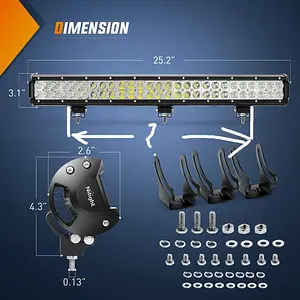J
Johanna Flashman

Shopping for a new road bike can be as fun as it is nerve-wracking. There are hundreds of options, from practical picks to WorldTour-level bikes ridden by the pros. The sheer number of builds, features, and specifications can confuse even the most avid riders.
Fortunately, we have a team of experts who spend their days obsessing over what exactly makes the best road bike for racing, recreation, and endurance. We tapped them to test this year’s crop of 42 bikes all over the world to help you make the right decision.
At a Glance
- Editor’s Choice: Cannondale SuperSix EVO ($8,300)
- Best High-End Performance Race Bike: Specialized Tarmac SL8 ($14,000)
- Best Value: Trek Domane AL ($1,699)
- Best Fast Road Race Bike: Scott Foil RC Pro ($8,999)
- Best Endurance/Performance Hybrid: Lauf Uthald ($4,690)
- Best Versatile Aero Bike: Giant Propel Advanced SL 0 ($12,500)
- Best Sequel: Cervelo Soloist Ultegra Di2 ($6,800)
- How We Test
- Meet Our Lead Tester
- How to Choose a Road Bike
All gear in this guide was tested by multiple reviewers. If you buy through our links, we may earn an affiliate commission. This supports our mission to get more people active and outside. Learn more.

(Photo: Courtesy Cannondale)
Editor’s Choice
Cannondale SuperSix EVO
$8,300 at Cannondale
Test bike: SuperSix Evo Hi-Mod 2 (56 cm)
Weight: 16.1 lbs
Pros and Cons
⊕ Lightweight
⊕ Comfortable
⊕ Relatively aerodynamic
⊗ The rider will feel more small bumps and vibrations at the saddle in comparison to the previous generation bike
The SuperSix Evo is Cannondale’s updated lightweight racer. It’s not quite as aerodynamic as the American brand’s aero-at-all-cost SystemSix or as smooth as the Synapse all-road bike, but it is far more comfortable, lighter, and still offers agile handling considering its extremely fast pace. Though this new iteration doesn’t represent the same performance leap as the first model, the upgrades to this version make the bike easier to work on and generally more aerodynamic.
Much of those aero gains are found at the front end. On the previous SuperSix, Cannondale made the well-intentioned decision to route the cables largely internally but in front of the headset bearings, which added bulk to an otherwise slim-tubed bike. It also limited just how much the bars could turn left or right. In the latest system, the cables are routed through the headset bearings using a triangular steerer tube. This allowed Cannondale to make the headtube area much more slender, making for a trimmer, more aerodynamic (and therefore faster), profile.
There are three different tiers of carbon frame construction within the SuperSix Evo family. Most riders will be happy with the standard carbon option, though the Hi-Mod and Lab71 frames are even lighter (and more expensive). We tested the SuperSix Evo Hi-Mod 2, which featured a Shimano Ultegra Di2 drivetrain, Hollowgram R-SL 50 wheels, and a Vision aero carbon handlebar. One small downside: in our 51-centimeter test model, we found the bike to be a touch less compliant at the saddle than the previous generation. Swap from the stock 25-millimeter tires to 28 millimeters or wider, however, and you’ll get one of the best fast road bikes you can buy today.
Read the Full Review

(Photo: Courtesy Specialized)
Best High-End Performance Race Bike
Specialized Tarmac SL8
$14,000 at Specialized
Test bike: Specialized S-Works Tarmac SL8 Dura-Ace Di2
Weight: 14.72 lbs
Pros and Cons
⊕ Energetic on the uphill
⊕ Stable on the downhill
⊗ Pricey
There’s no denying that there’s a lot of hype surrounding the Tarmac SL8 race bike —you’re just as likely to see it at the group ride as on your favorite influencer’s Instagram account—and we’re here to report that the hype is real.
The eighth generation of Specialized’s Tarmac comes with all the customary claims of being lighter, smoother, and stiffer. What makes this bike stand out from the competition is how it rides. Its low weight makes it feel eager up punchy climbs, and the frame’s stiffness provides direct, confidence-inspiring steering. As a whole, this bike will make you want to ride farther than you have before.
Specialized offers the Tarmac SL8 in an ultra-lux S-Works model (with their lightest-weight 12R carbon frame) and a range of build kits using a less expensive 10R carbon frame. Both are available in myriad drivetrain configurations from SRAM and Shimano and a range of colorways that we noticed invoked jealous commentary from cycling friends. While our test bike was a top-spec S-Works model—which nets a top-tier drivetrain and wheels alongside their best frameset—the standard Tarmac frames are still among the lightest road bike frames available.
All of this comes at a price—$14,000, to be exact, which is the biggest drawback to the new Tarmac. But if you’re willing to shell out, we recommend models with the less-costly 10R carbon frame, as it offers the same stiffness, compliance, and ride quality as the ultra-luxe S-Works. Those start at $6,500 and still net you a race-ready bike with electronic shifting. Trust us—your bank account will thank you.
Read the Full Review

(Photo: Courtesy Trek)
Best Value
Trek Domane AL
$1,700 at Trek
Test bike: Domane AL 4 Gen 4 (56 cm)
Weight: 22.8 lbs
Pros and Cons
⊕ Extremely affordable
⊕ Versatile
⊗ Heavier compared to other options
The aluminum Trek Domane (pronounced ‘dough-MA-knee’) is the brand’s least expensive way to get into road cycling. It is also one of the most popular first road bikes out there, thanks in part to its ability to wear several hats. Some cyclists will use this endurance road bike as a swift recreational ride, while others might use it for commuting. For the fair price of $1,699, the iteration we recommend—the Domane AL 4—does both competently.
Much of the Domane’s long-time popularity comes thanks to a comfortable riding position, generous tire clearance, and predictable, composed handling. None of that changes in this iteration. While the Domane offers a choice between several carbon-framed builds, our recommendation is for the Domane AL (AL for its aluminum frame), which offers all of this capability in an unassuming and budget-friendly package.
The Domane is an endurance bike with geometry to match, placing the rider more upright than most road bikes, and ensuring the handling is approachable rather than aggressive. This makes the bike stable-feeling on fast downhills without feeling clunky on the climbs. The generous 38-millimeter tire clearance means you could reasonably ride gravel aboard the Domane AL as well. The touch points—the handlebars, the saddle, and even the bar tape—are high-quality and help the bike feel more than the sum of its parts.
Read the Full Review

(Photo: Courtesy Scott)
Best Fast Road Race Bike
Scott Foil RC Pro
$9,000 at Scott
Test bike: Foil RC Pro
Weight: 15.9 lbs
Pros and Cons
⊕ Extremely confidence-inspiring at high speeds
⊗ Pricey and aggressive geometry make it a non-option for some cyclists
What goes up must come down, and going down is when we fell in love with the Foil RC, designed with the singular purpose of going fast. Not only is it stable and confidence-inspiring at the highest speeds, but it gives you enough feedback to feel the speed, too. Its one-piece bars and overall lateral stiffness deliver a responsive ride that makes you want to push harder on every bend of the descent. Its unique seat post provides the comfort of a thin seat post with the aero benefits of a deeper aero-foiled post. The benefit is that the bike rides so comfortably that we felt more confident more quickly than we did while riding many others while going that fast.
Aero bikes are normally heavier than other options, due largely to their larger tube shapes that optimize for aero efficiency first and low weight second. However, our medium-sized Scott Foil RC Pro was light enough that even our climbing-focused testers were happy with its uphill performance.
The Scott Foil RC features an aggressive fit and handling geometry, so it’s not for beginner cyclists. Further, while the Foil RC is less pricey than many other aero road bikes, its high performance comes at a cost. $4,799 nets you the bike itself. An upgrade to carbon wheels will cost you extra, which makes the Foil RC a worthwhile proposition for only a select few. But those riders will be treated with one of the fastest-feeling, confidence-inspiring race steeds available today.
Read the Full Review

(Photo: Courtesy Lauf)
Best Endurance/Performance Hybrid
Lauf Uthald Race Wireless
$4,690 at Lauf Cycles
Test bike: Uthald Race Wireless
Weight: 17.5 lbs
Pros and Cons
⊕ A comfortable, high-value option that will work well for most cyclists
⊕ Easy to maintain
⊗ Out-of-the-box experience takes some getting used to
The Lauf Uthald is either an anomaly in the road bike world or a bike ahead of its time. Lauf calls it a “fast performance bike,” its spec sheet labels it an “endurance road bike,” and the overall package challenges several performance bike norms. Our verdict: The Uthald (Icelandic for “endurance”) is a versatile ride that would work for a wide swath of riders. First, the frame geometry makes it slightly slower to turn than the race bikes on this list and more settled in a straight line at speed. Further, its fit geometry isn’t quite as back-breaking as a race road bike, and not as upright as many endurance bikes. This makes it a great option for riders who want to ride long distances on the road without sacrificing comfort.
Lauf aimed to make the Uthald both versatile in its handling and easy to maintain for the end user, and they succeeded. The traditional stem and bar are easy to swap for fit; the threaded bottom bracket is easy to replace when it wears out; and the bike comes with a high-end but easy-to-fix SRAM Universal Derailleur Hanger (UDH).
As much as the bike’s geometry stands out, its value is what’s truly unique. A complete Lauf Uthald Weekend Warrior Wireless starts at $3,490 which nets you a Uthald frame, a carbon bar and seat post, and DT Swiss alloy wheels. The SRAM Rival AXS drivetrain with wireless electronic shifting does its job wonderfully and comes equipped with a power meter to boot. Overall, the Uthald is a hard-to-beat value proposition with some of the most sensible features on the market.
Read the Full Review

(Photo: Courtesy Giant)
Best Versatile Aero Bike
Giant Propel Advanced SL 0
$12,500 at Mike’s Bikes $12,500 at Giant
Test bike: Propel Advanced SL 0
Weight: 15.2 lbs
Pros and Cons
⊕ Some of the best aerodynamics we tested
⊕ Very light and stiff
⊗ Fully-internal cable routing makes fixes more difficult
Giant set out to improve the aerodynamic efficiency of the 2023 Propel while also making it more of an all-around performer. This bike is still intended to slice through the air, and makes use of truncated airfoil tube profiles everywhere it matters: namely, the down tube, seat testing tube, seatstays, head tube, and fork blades. However, the Propel also now strikes a much more svelte-looking profile that further blurs the lines between the all-out aero machine it’s supposed to be and semi-aero lightweights like Giant’s own TCR Advanced SL.
Even without wind-tunnel testing, it was clear from our first pedal stroke that the Propel Advanced SL 0 is a proper rocket ship. It’s easy to bring up to high speeds and requires less effort to hold them. During group rides, we inadvertently kept riding away from our buddies on non-aero road bikes.
Perhaps more important to everyday riders is how the Propel feels when going fast—it’s a glorious bike to ride. It’s tangibly light and stiff—not just for an aero bike, but for a good road bike, period. The Propel is a wonderful partner on long climbing days and when you feel inspired to attack steep pitches. Sharp stabs at the pedals are rewarded with quick bursts of speed with no hint of delay or hesitation. The handling is equally precise and responsive. It feels somewhat buzzy and electric, but without being harsh or unwelcoming like many other aero road bikes. It’s a veritable eager puppy, always up for another go and brimming with more energy than you.
There’s a smorgasbord of great choices in this category right now. If you’re after the ultimate aero gains, you’ll either have to head into a wind tunnel or do some instrumented on-road testing to find out which offers the most performance for your particular body. However, if you’re the type of roadie that wants to go fast without giving up much in the way of other performance aspects—such as comfort and handling—the Propel is an incredible machine.
Read the Full Review

(Photo: Courtesy Cervelo)
Best Sequel
Cervelo Soloist
$6,800 at Backcountry $6,800 at Competitive Cyclist
Test bike: Soloist Ultegra Di2
Weight: 16.5 lbs
Pros and Cons
⊕ Precise handling
⊕ Exceptional power transfer
⊗ Harsh ride on bumpy roads
For 2023, Cervelo revived its game-changing Soloist franchise with an impressive list of updates and improvements that make for a compelling race bike at a fair price. The new Soloist is equipped with a completely redesigned frame, featuring a new carbon layup that has increased stiffness and reduced weight. The bike’s aerodynamics are also far better, with the incorporation of Cervelo’s latest Squoval Max tube shapes.
The cockpit includes Cervelo’s “externally integrated” two-piece handlebar and stem system, which provides a clean and aerodynamic cockpit but still allows tinkering—the cables run underneath the stem and through the headset bearings. It’s not perfect, but the system allowed for easy fit adjustments, and the ergonomic design of the bars provided a comfortable grip.
During testing, the Soloist proved to be incredibly responsive and fast. The bike’s new frame design made for exceptional power transfer, and the tube shapes minimized drag. The bike’s handling was also noteworthy, with precise cornering and stability at high speeds. One thing to note: while we expect a stiff ride from such a machine, it was notably harsh on less-than-perfect roads.
With its upgraded frame design and aerodynamics, the Soloist is a force, and one we’d happily toe a start line with. It might become the most popular Cervelo among self-funded racers for years to come.
Read the Full Review
How to Choose a Road Bike
What is the difference between a road bike and a gravel bike?
A road bike is designed first and foremost to be ridden on harder surfaces. That generally means roads and bike paths, but chip-sealed, cracked, and pothole-littered roads can be ridden in a pinch on a road bike, too.
A road bike will typically offer a lightweight frame, wheels, and components to match. Almost every road bike these days features a drop handlebar that curls from the top down, as it offers the rider several hand positions while riding. The tires are almost always narrow, typically ranging from 25 millimeters to 38 millimeters, and have essentially zero tread on them in the name of more efficient riding.
Road bikes don’t come with suspension, but they don’t need it for performance on pavement—modern road bikes are smoother and more comfortable to ride than ever. You’re likely not going to find suspension or even wider tires on a road bike, as that’s the territory of a gravel bike.
A gravel bike, which is designed for riding on dirt and gravel roads first, will prioritize grip and comfort for the seat and handlebars. It will do so at the expense of weight and speed on smooth roads and tarmac. Be sure to see our Best Gravel Bikes of 2024 guide for more information.
If you know you want to ride mostly on-road, and you don’t intend to carry any extra gear, then a road bike is the right choice. Choose the gravel bike if you know you want to ride predominantly gravel and dirt paths, or if you’re uncertain exactly where your riding will take you.
What type of road bike do I need?
There are two broad categories of road bikes: race road bikes and endurance road bikes. Each of those has subcategories that can quickly become confusing.
The type of road bike that is best for the majority of riders is an endurance road bike, occasionally called an all-road bike. An endurance road bike emphasizes comfort and approachable handling. They’re typically easier to manage as the speeds increase and offer up to 38 millimeters of tire clearance to smooth your ride. Further, they’re more likely to have mounts for fenders, racks, or even additional water bottle cages. All-road bikes offer as much as 40 millimeters of tire clearance but retain handling characteristics optimized for riding on roads.
The flashiest road bikes are typically race bikes. They’re more likely to place the rider in a lower, more aerodynamic body position that emphasizes speed over comfort. The frames are lighter and offer stiffer riding to help you go faster. Further, the handling is typically more responsive, sometimes bordering on twitchy. Race road bikes typically feature 25 to 28-millimeter-wide tires, and ditch any feature that doesn’t make the bike easier to ride quickly.
Not all race bikes are the same, however. Some are aero road bikes, which have deeper tubes and rims that prioritize aerodynamics and out-and-out speed. Others are called climbing bikes, which prioritize low weight and stiffness at the expense of aero efficiency.
How much do I need to spend on a road bike?
Most of the bikes we’ve tested qualify as high-end bikes, which can cost as much as a used car. However, there are some fantastic road bikes at a more affordable price point. Budgeting to buy a road bike isn’t just buying the frame. Getting the most out of your road bike requires having the right accessories. At a minimum, you’ll need a quality set of bike lights and a well-fitting helmet in the name of safety. Further, you’ll need to budget for a decent set of pedals, and matching shoes if you want to use clip-in style pedals rather than a more accessible flat pedal.
At the entry-level, one can expect to pay anything between $1,000 to $2,000, depending on what features the bike offers. Clothing, including a jersey, shorts, a helmet, and clip-in shoes can cost anything from $150 to $300. Those accessories we mentioned? Expect to pay $100 to 150 at a minimum, and more depending on your specific needs.
How do I choose the right size road bike?
Road bikes come in a range of sizes to fit riders of all heights. This size range is usually expressed in centimeters, though sometimes you’ll find an XS to XL range.
To figure out the correct size for you, go for a test ride. That means standing over the top tube of the bike (sometimes referred to as a crossbar) to see whether you can comfortably stand with both feet flat on the ground. The top tube can touch you, but the bike is a better fit if it doesn’t.
The right-size road bike will place your arms at roughly a 90-degree angle from your torso without feeling uncomfortable. Your knees will have a slight bend in them at the bottom of your pedal stroke. Most importantly, the bike will feel comfortable to maneuver around.
Of course, the best course of action is to go to a trusted bike shop to have a bike properly sized and fit. Having another set of eyes to help you find the correct size bike will ensure your money is well-spent. They’ll help you determine the right bike for you based on your riding experience, mobility, and needs, and they’ll help you determine proper sizing for features like handlebars, saddles, and even your frame.
How We Test
- Number of Testers: 5
- Number of Bikes Tested: 42
- Longest Test Ride: 142 miles
Five dedicated riders from around the world put 42 bikes through their paces on varied terrain and across hundreds of collective miles—from west Texas to Steamboat Springs, Colorado to Glasgow, Scotland. The road bikes we tested—ranging from entry-level to ProTour worthy—were chosen to encapsulate the best range of bikes on the market today. Yes, we tested road bikes from all the major road bike brands, but we also tested the small brands to cover all bases.
Our test rides included local loops, big days out, group rides, and everything in between. After each ride, we asked each reviewer to judge a bike on the following criteria: Who is it best suited for, and what type of riding was it designed for? What were its strengths, what were its weaknesses, and was there anything that made it stand out above the competition? Every reviewer not only took the time to ride each bike to assess its performance but also built them out of the box and maintained them through weeks of testing to learn more about their ins and outs.
Meet Our Lead Tester
Alvin Holbrook is a tech editor for Velo. He’s been in the bike industry for almost a decade and covers road, gravel, and e-bikes. When he’s not geeking out over bike gear, he uses his background in urban planning to cover stories about active transportation, policy, tech, and infrastructure through the Urbanist Update series. He lives in San Antonio, Texas with his wife and an ever-growing stable of bikes and kitchen utensils.
The post The Best Road Bikes for Racing and Endurance appeared first on Outside Online.
Continue reading...







